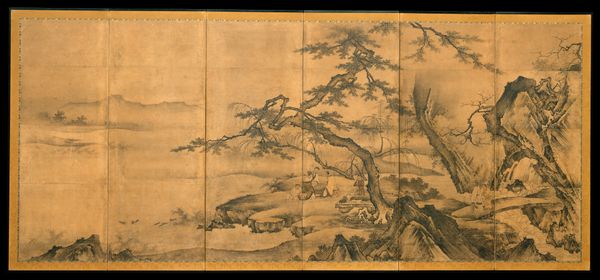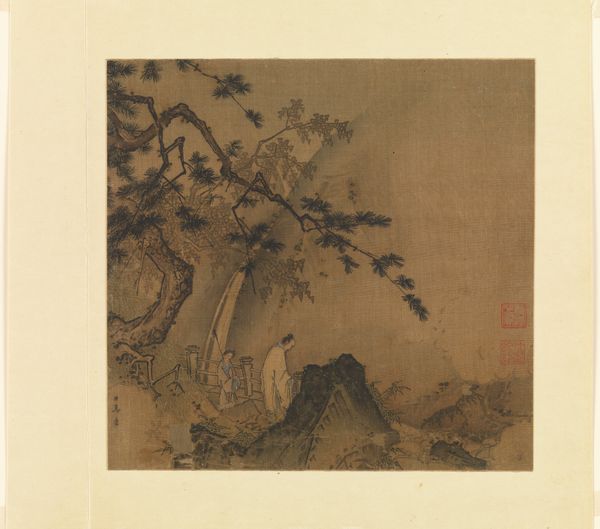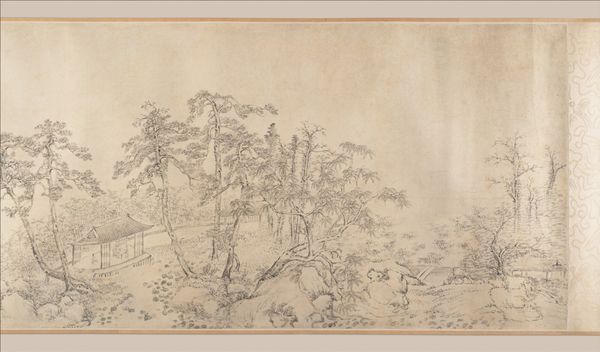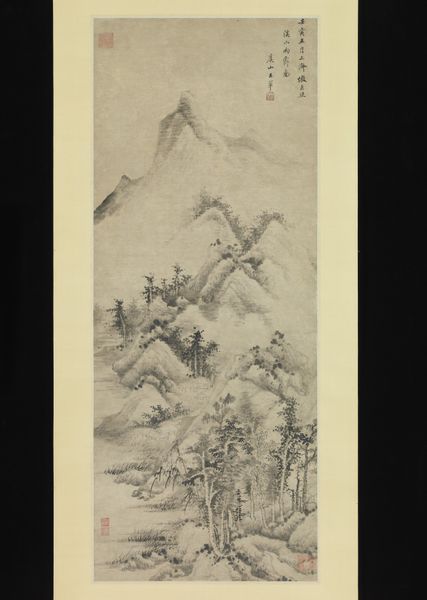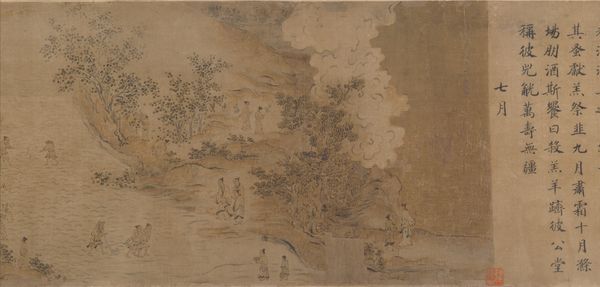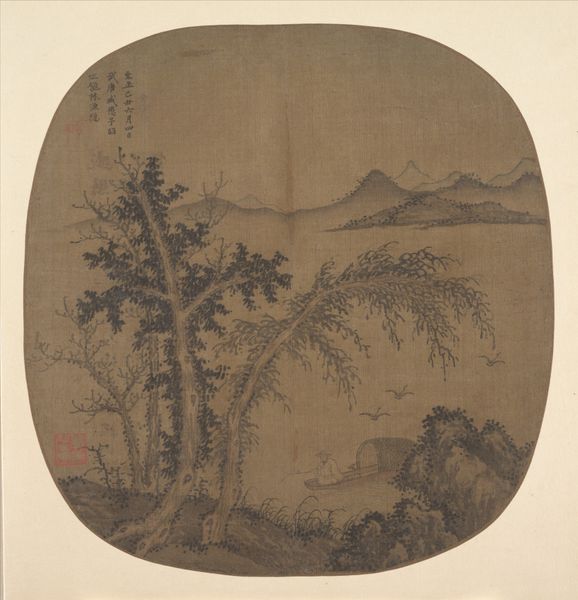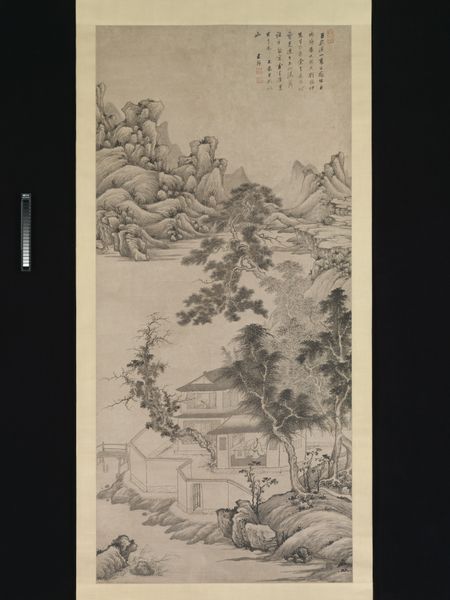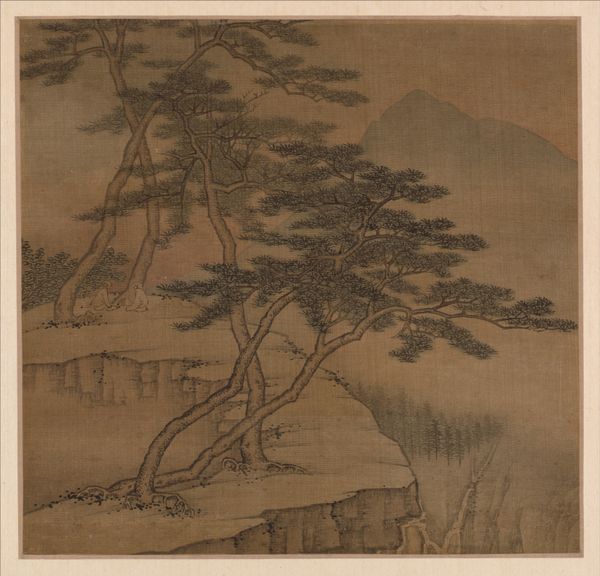
painting, ink
#
byzantine-art
#
ink painting
#
painting
#
asian-art
#
landscape
#
figuration
#
ink
Dimensions: 10 x 10 in. (25.4 x 25.4 cm)
Copyright: Public Domain
Editor: This ink painting, "Viewing the Moon under a Pine Tree," by Ma Yuan, dates back to the early 13th century. The monochrome palette gives it such a serene and contemplative mood. What strikes me most is the small scale of the figures relative to the landscape. What do you see in this piece? Curator: I see a carefully constructed power dynamic at play, even within what appears to be a peaceful scene. The immense, gnarled pine tree dwarfs the human figures, highlighting the insignificance of individuals against the backdrop of nature and, by extension, the cosmos. The setting feels gendered to me. How might that be shaping this moon-viewing experience? Editor: Gendered? In what way? It just feels like people appreciating nature. Curator: Think about traditional roles. Viewing the moon, especially in solitude or with a select few, could be seen as a privilege of the educated male elite in that historical context, a time rife with gendered social stratification. The painting thus silently reinforces that societal structure. How does that frame the scene for you now? Editor: That does make me consider the context differently, seeing it more about the expression of social status than just pure contemplation. The men blend into the background and landscape…almost disappearing. Is it intentional, symbolic of detachment? Curator: Perhaps not detachment as much as the way identity gets woven into the natural order. Think of nature, society, and class interplaying and reflecting how individuals situate themselves, or are situated. Where does personal identity fit into this cosmic setting? Is it absorbed by or set apart from nature? Editor: So, the painting’s not just about nature then, but about how society uses nature to reflect its own hierarchies? Curator: Precisely. The art invites us to critically assess how our views on landscape are inseparable from issues of gender, class and identity even today. Editor: I hadn’t considered it like that before. Thanks. Curator: Likewise. It’s these types of nuanced considerations that help breathe contemporary relevance into art history.
Comments
No comments
Be the first to comment and join the conversation on the ultimate creative platform.

